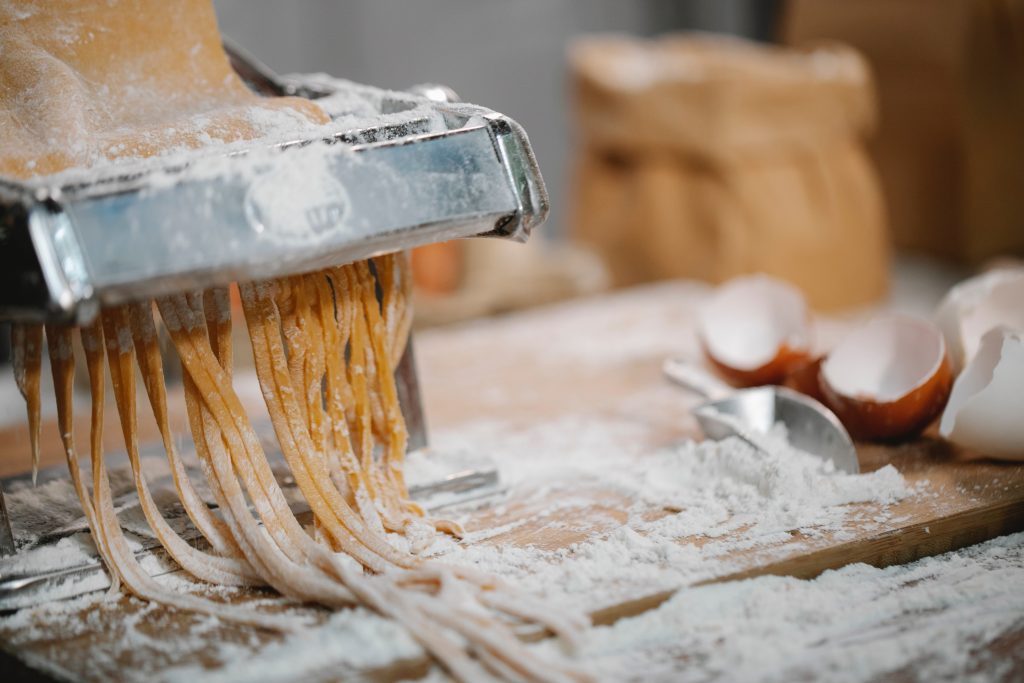
If you have a gluten-free diet you might think making Fresh Pasta is off the table, but that’s where you’re wrong! There are so many gluten-free flours and products available out there, so roll up your sleeves, get out your pasta maker, and get ready to try some of the best gluten free pasta flours on the market!
There are several reasons you might think about avoiding gluten, including food allergies, gluten sensitivity, lifestyle preferences, and more.

Going Gluten-Free shouldn’t stop anyone from enjoying Fresh Pasta! Check out my guide to making gluten-free fresh pasta here:
Recipe: How to Make Gluten-Free Fresh Pasta at Home
Going gluten-free may be beneficial if one of your fitness goals is removing processed carbs from your diet. This is due to the high gluten content of many of the meals with the highest carbohydrate content, especially processed and simple carbs.
And when talking about food with high carb content, one of the top contenders is pasta. Traditionally wheat flour is commonly used to make pasta, so going gluten-free can be more difficult for pasta lovers than a straightforward diet change!
However, there are several gluten-free flour options available that you can use to make fresh pasta at home, meaning you don’t have to give up pasta even if you want to follow a gluten-free diet. We have got you covered with our list of top flours that you can use to make fresh pasta without compromising on taste.
Best Gluten Free Flour – my recommendations
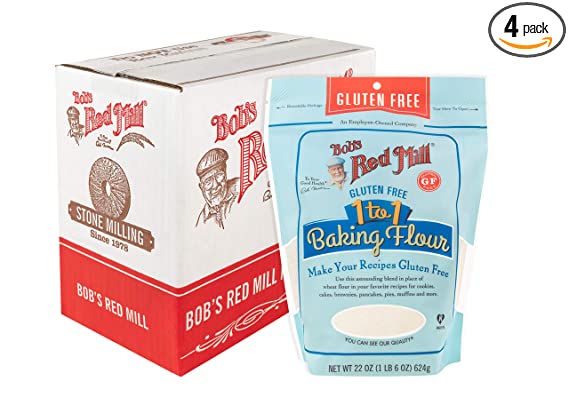
Bob’s Red Mill Gluten Free 1 to 1 Baking Flour
Bob’s Red Mill Gluten Free 1 to 1 Baking flour is a go-to for many baking enthusiasts, so it’s no surprise that it is also one of the best gluten-free flour available to make fresh pasta. It contains xanthan gum, which helps to maintain the neatly stretched-out shape of the pasta, meaning you can still make those complex shapes such as gnocchi and ravioli, gluten-free.

King Arthur Measure for Measure Gluten Free flour
King Arthur measure for measure flour is an easy-to-use 1:1 substitute for wheat flour. It contains a mix of rice flour, wholegrain brown rice flour, potato starch, whole sorghum flour, and other gluten-free alternative ingredients. It also contains xanthan gum so your favorite pasta recipe may be simply converted to its gluten free version without any additional changes needed!
This mixture, which has been iron, calcium, and vitamin B fortified, has been kosher-certified and Non-GMO Project validated, and contains xanthan gum for easy shaping.
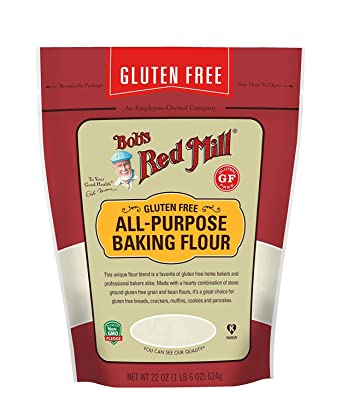
Bob’s Red Mill Gluten Free All Purpose Baking Flour
Our second flour on this list from Bob’s Red Mill, their Gluten Free all-purpose baking flour is a combination of chickpea, tapioca, sorghum, and fava bean flours as well as potato starch. The ingredients are highly nutritional, but unlike some of the other flours on this list it lacks stabilizers like xanthan or guar gums. As a result, you might find it a bit more difficult to make tricky pasta shapes with this flour.
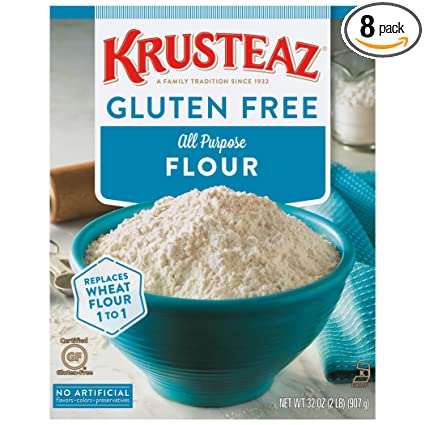
Krusteaz Gluten Free All Purpose Flour
The greatest value mix we discovered is from Krusteaz with their Gluten Free All purpose flour. At a low price point you can get started right away in using your pasta maker to make high quality homemade fresh pasta without breaking the bank.
Its ingredients contains a mix of flours, whole grain quinoa flour, and xanthan gum, so you can still use it to make pasta shapes.
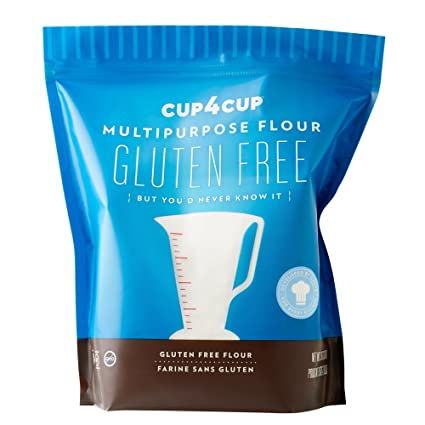
Cup4Cup Multipurpose Flour: Gluten Free
Cup4Cup is recognised as the first gluten-free flour that can be substituted 1:1 for both all-purpose and wheat flour in virtually any recipe. The chefs at Thomas Keller’s renowned restaurants created it so that gluten-free guests might enjoy one of their renowned meals. Because of that experiment, we now have a way to produce pasta without having to change our favourite recipes.
Conclusion: Which is the best gluten-free flour to use for making fresh pasta?
Out of the list of flours above, my top two choices would be between King Arthur’s Measure for measure or Krusteaz All Purpose Flour. While the former is considered the best 1:1 substitute for wheat flour when making fresh pasta, the latter is the most inexpensive option.
My top choice has to be King Arthur’s measure for measure. It is a favorite for many pasta lovers who want to try a gluten free recipe and King Arthur is not only a renowned name in baking for many years, but it also provides easy ways to convert any homemade pasta recipes into gluten free alternatives so you can keep making pasta that shapes well and tastes delicious!
FAQs
What is Gluten Free flour?
Dry mixes known as gluten-free flours or blends can take the place of or be used in place of gluten in baked goods like bread, pizza, cookies, pasta, or cakes. They rely on a suitable combination of elements that closely mirror the operation and characteristics of natural gluten-forming proteins.
Is gluten-free pasta healthier than regular pasta?
Although there is some debate over these pasta’s potential health advantages, they may all be part of a balanced diet. The healthiest choice is dependent upon you and your dietary requirements.
Do Gluten-Free Pasta and Regular Pasta Cook the Same?
Pasta made without gluten should be prepared as directed on the package, just like conventional pasta. The method is the same regardless of the variety.
Going gluten-free shouldn’t stop anyone from enjoying a rich, delicious diet. Check out my friend Laura Strange’s amazing website which has a whole host of gluten-free recipes!
If you have any questions about the different varieties or flour, or want to share your experiences and top tips, feel free to leave a comment below, I’d love to hear from you!
Leave a Reply